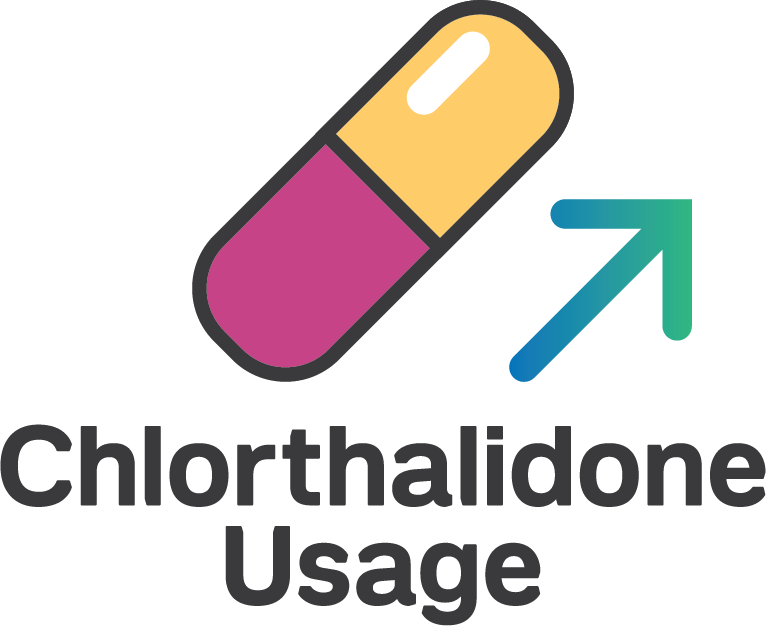While thiazide diuretics are a commonly prescribed class of antihypertensives, chlorthalidone is not the most commonly prescribed thiazide diuretic in the U.S.1-3 Hydrochlorothiazide (HCTZ) has been, and remains, the most commonly prescribed thiazide diuretic, although, studies, meta-analyses, and systematic reviews have asserted chlorthalidone’s superiority over HCTZ.1-11 Compared to HCTZ, chlorthalidone has a higher potency, longer duration of action, and a greater ability to reduce adverse effects such as stroke and heart disease.4-11
Hwang et al. analyzed antihypertensive drug trends from 2008 to 2014 using prescription claims data from the Marketscan database.2 The Marketscan database represents nearly 55% of employer-based insurance programs, covering nearly 30 million Americans.12 Adults between the ages of 18 and 65 with an International Classification of Diseases (ICD) code of hypertension were included in the analysis.2 Compared to 2008, by 2014 thiazide diuretic use increased by 2% and chlorthalidone use nearly doubled, increasing from 3.8% in 2008 to 6.4% in 2014 (p<0.001). In 2014, HCTZ made up 92.9% of thiazide diuretics being used. Analyses of antihypertensive drug trends, both using National Health and Nutrition Examination Surveys (NHANES) data, also found hydrochlorothiazide to be the most widely used diuretic.1,3
Chlorthalidone use has also increased among Medicare Part D beneficiaries.13 The number of beneficiaries using chlorthalidone has more than doubled from 148,121 in 2011 to 349,592 beneficiaries in 2015.13
References
- Gu Q, Burt VL, Dillon CF, Yoon S. Trends in antihypertensive medication use and blood pressure control among United States adults with hypertension. Circulation. 2012;126(17):2105-2114.
- Hwang AY, Dave C, Smith SM. Trends in antihypertensive medication use among US patients with resistant hypertension, 2008 to 2014. Hypertension. 2016;68(6):1349-1354.
- Kantor ED, Rehm CD, Haas JS, Chan AT, Giovannucci EL. Trends in prescription drug use among adults in the United States from 1999-2012. JAMA. 2015;314(17):1818-1831.
- Barrios V, Escobar C. Which thiazide to choose as add-on therapy for hypertension? Integr Blood Pressure Control. 2014;7:35-47.
- Dorsch MP, Gillespie BW, Erickson SR, Bleske BE, Weder AB. Chlorthalidone reduces cardiovascular events compared with hydrochlorothiazide: a retrospective cohort analysis. Hypertension. 2011;57(4):689-694.
- Kaplan NM. Chlorthalidone versus hydrochlorothiazide: a tale of tortoises and a hare. Hypertension. 2011;58(6):994-995.
- Olde Engberink RH, Frenkel WJ, van den Bogaard B, Brewster LM, Vogt L, van den Born BJ. Effects of thiazide-type and thiazide-like diuretics on cardiovascular events and mortality: systematic review and meta-analysis. Hypertension. 2015;65(5):1033-1040.
- Roush GC, Holford TR, Guddati AK. Chlorthalidone compared with hydrochlorothiazide in reducing cardiovascular events: systematic review and network meta-analyses. Hypertension. 2012;59(6):1110-1117.
- Sternlicht H, Bakris GL. Hydrochlorothiazide as the diuretic of choice for hypertension: time to kick the habit. J Am Coll Cardiol. 2016;67(4):390-391.
- Pareek AK, Messerli FH, Chandurkar NB, et al. Efficacy of low-dose chlorthalidone and hydrochlorothiazide as assessed by 24-h ambulatory blood pressure monitoring. J Am Coll Cardiol. 2016;67(4):379-389.
- Ernst ME, Carter BL, Goerdt CJ, et al. Comparative antihypertensive effects of hydrochlorothiazide and chlorthalidone on ambulatory and office blood pressure. Hypertension. 2006;47(3):352-358.
- Smith J, Medalia C. U.S. Census Bureau, Current Population Reports, Health Insurance Coverage in the United States: 2014. Washington, DC: U.S. Government Printing Office; 2015.
- Medicare Drug Spending Part D All Drugs. U.S. Centers for Medicare & Medicaid Services 2016. Accessed September 27, 2017.


